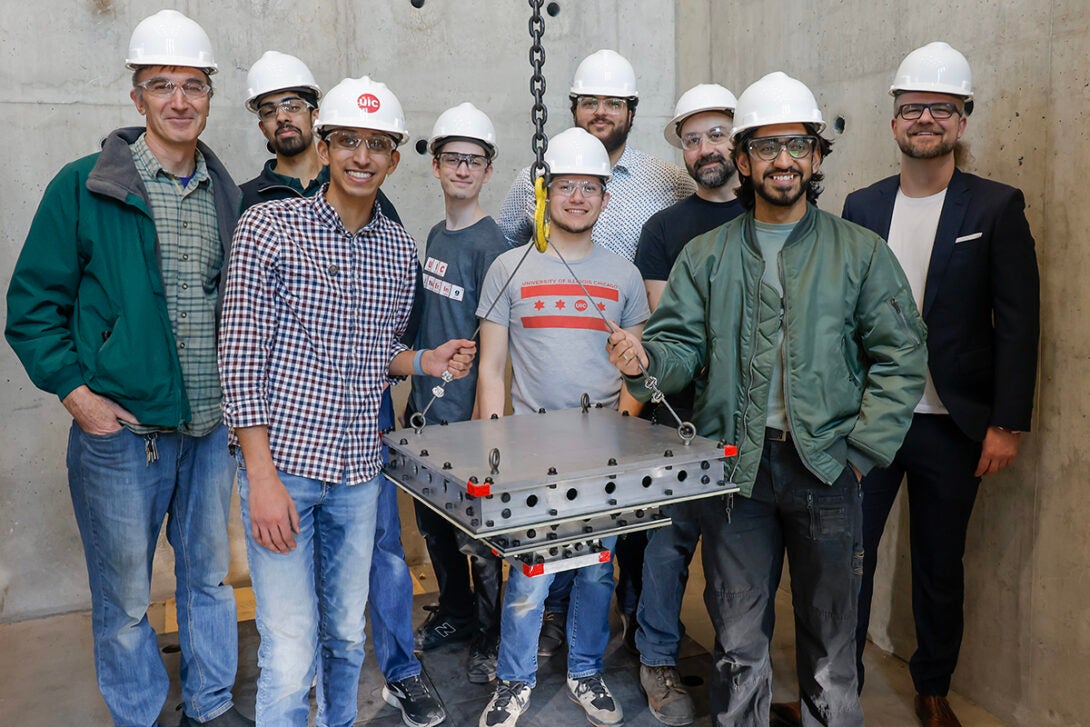NASA project is one of many capstone projects to be featured at Engineering Expo
1

A team of MIE students recently built and conducted a drop test for a celestial landing device in UIC’s High Bay Structures Laboratory, a part of their capstone project sponsored by NASA.
The team of Caleb Smith, Mustafa Siddiqui, Abdalla Albazzor, Faisal Hussain, Tyler Alirie, and Sam “Fish” Hooson worked two semesters on their “High Energy Impact Lander Reinforced with Carbon” Senior Design Course project, which challenges students to solve engineering problems using research, creativity, and the skills they developed at UIC.
The goal of this project is to improve a NASA landing device, which will be intentionally crashed on Mars or other planets using a system designed to absorb the impact and keep the payload intact. The students are proposing to use high-performance composite materials in the design. These materials have the potential to reduce the cost of making the device and make it lighter, while maintaining the strength needed for the harsh landing.
“What makes our design unique is we’re incorporating carbon fiber and Innegra composites – a high-performance, lightweight fiber made from high molecular weight polypropylene – into the design. We want to make this design lighter weight and higher strength in order to increase the potential payload size so we can go to places that are harder to reach on other planetary surfaces,” said Smith, who serves as the team’s lead engineer and the principal investigator for the NASA grant.
In addition to the student-designed device, the team also built and tested a replica of the NASA device that acts as a control. They plan to thoroughly compare and document the different reactions between the devices when they land.
They noted that one of the major issues NASA had with their landing was that they experienced a really high bounce when it hit the surface. The goal of their device is to disperse the kinetic energy and absorb the impact of a crash landing on a surface.
“It was successful, and we learned a lot during this test. One of the big takeaways was our composite build didn’t bounce as high as the (NASA build), which means it did dissipate more energy. The composite did break, and that means it’s not going to spring back, and that dissipates more energy, which is very good,” Hooson said.
The team will present their project and the final test results at UIC’s annual Engineering Expo on Friday, April 25, from noon to 3 p.m. at the Credit Union 1 Arena, 525 S. Racine Ave, Chicago. The expo will feature more than 700 students who make up approximately 200 teams from every department of the College of Engineering. The event is free and open to the public and tickets are not necessary to attend.